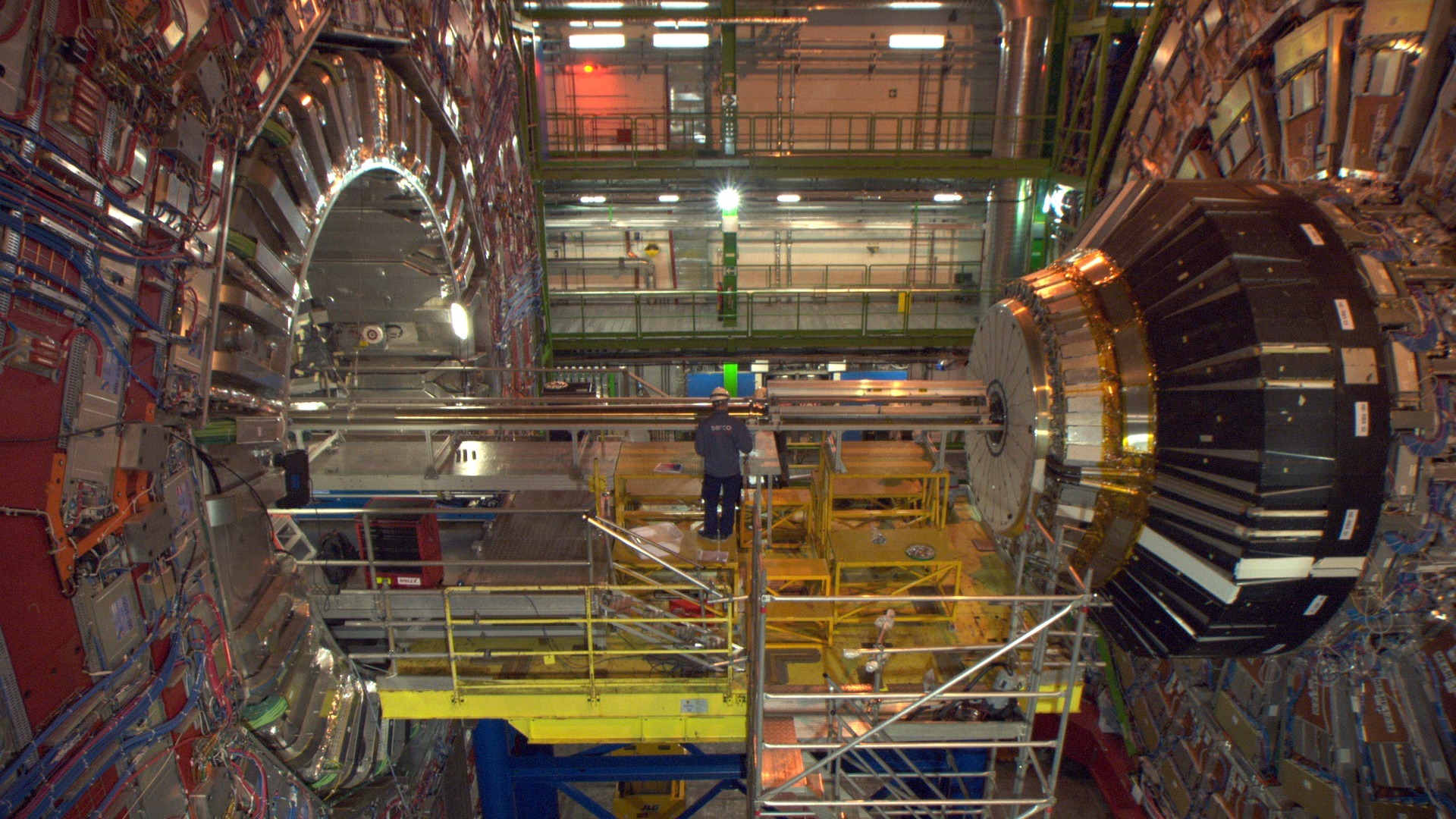
This year marks a decade since the world-famous discovery of the Higgs boson, the particle that proved a theory explaining how the energy released during the Big Bang turned from being massless (light) into having mass – thus transforming into what we and the Universe are made of today. The Higgs was discovered by smashing particles together within a 27-km-long circular track, deep underground in Geneva, known as the Large Hadron Collider (LHC).
Hadrons are subatomic particles composed of quarks, which come in flavours of up, down, strange, charm, top and bottom (plus their anti-particle versions). Two of the most well-known are the proton and the neutron, from which is built most ordinary matter. The LHC mainly collides protons, each containing three quarks; two ups and a down. When these proton beams collide head on – travelling at over 99.999 per cent of the speed of light – they break apart. Their combined energy is then transformed into different quarks arranged into a variety of particle types that shower into the detectors.
Every so often a new signal appears on a detector and suddenly things get very, very exciting – a mysterious bump in a graph means the discovery of a new particle. Cern, the Conseil Européen pour la Recherche Nucléaire, the research organisation that hosts the LHC, has discovered many new particles over the last 20 years: one fundamental particle (Higgs) and 63 hadrons in total. And now they have just announced three new particles to add to the list.
This new set of particles is particularly interesting because it’s the first time a pentaquark has been found to contain a strange quark, and the first time that a new tetraquark has appeared in a pair formation. It’s the particle physics equivalent of finding a secret stash of jigsaw pieces that reveal a whole new section to the puzzle.
On 5 July this year, Cern restarted after three years of upgrades that will take us to the next frontier. We are in a fascinating era of discovery, which is set to reveal even more secrets of our complex and beautiful Universe.
This piece is a preview from our New Humanist autumn edition. Subscribe here.

